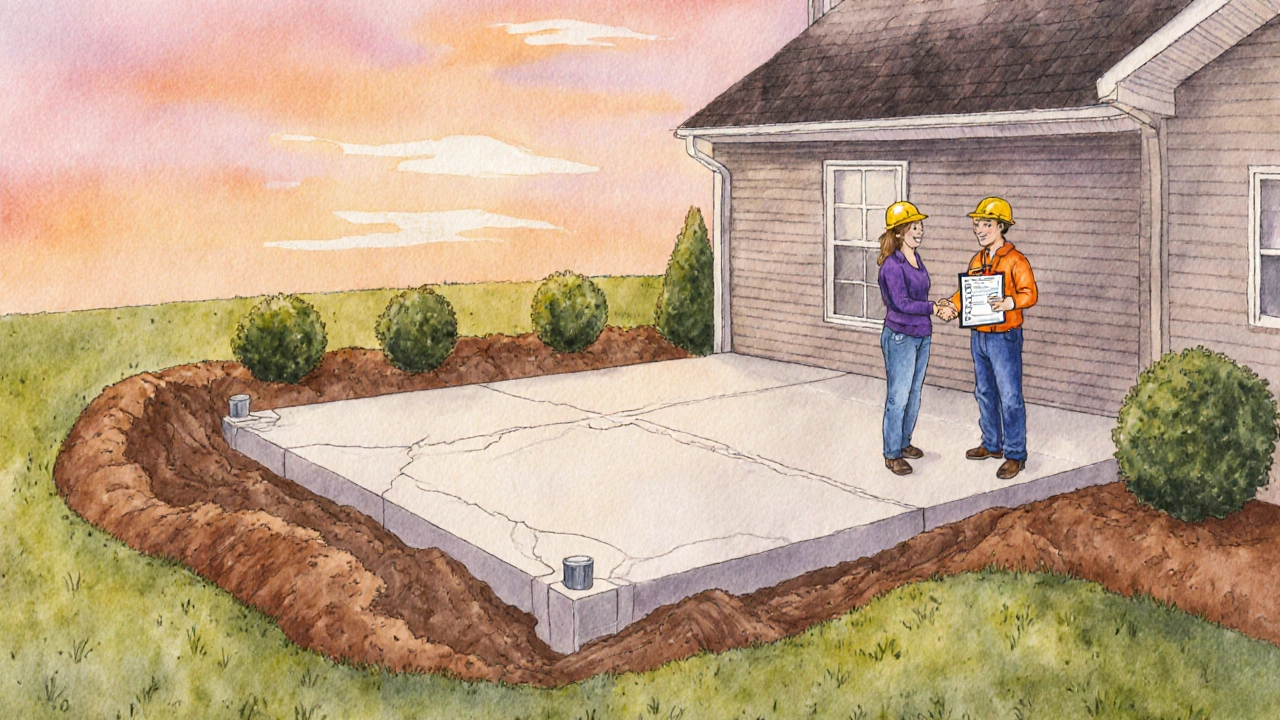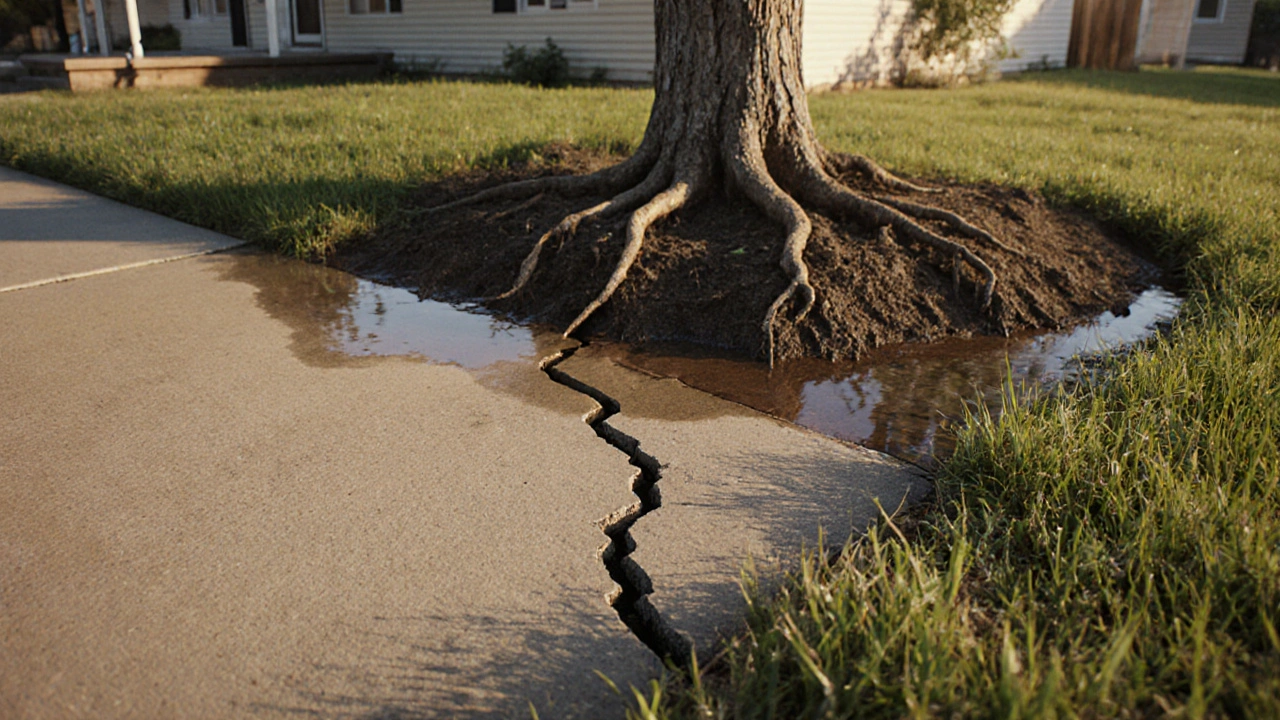Foundation Crack Repair Time Estimator
Estimate the time needed to repair foundation cracks in your home based on severity, repair method, and additional factors.
Estimated Repair Timeline
Your foundation crack repair will take approximately 5 days.
When a crack shows up in the base of your home, the first question that pops into most owners' heads is, "How long will this take to fix?" The answer isn’t a one‑size‑fits‑all because every foundation is different, but you can break the timeline down into clear stages and avoid costly surprises.
Foundation crack repair is the process of assessing, stabilizing, and restoring a compromised structural base so the house remains safe and dry. It involves everything from visual inspections to specialized injection or underpinning methods, and each step adds its own chunk of time.
What Causes Cracks in the First Place?
Understanding the root cause helps you gauge how complex the fix will be. The most common culprits are:
- Soil movement: Expanding clay or shrinking sand can shift the ground under the slab.
- Water infiltration: Poor drainage pumps water against the foundation, lifting or cracking it.
- Improper construction: Undersized footings or rushed concrete work leave weak spots.
- Tree roots: Large roots grow into and pry apart the concrete.
Assessing the Severity - First 1 to 3 Days
Before you even think about a repair schedule, you need a proper assessment. Most contractors will spend a half‑day to a full day on the following:
- Visual walk‑through to note crack width, length, and pattern.
- Level measurements to detect settlement.
- Moisture testing using a probe or infrared camera.
- Consultation with a structural engineer if the crack exceeds 1/4 inch or appears diagonal.
After the assessment, you’ll get a written report that includes the recommended repair method and a rough timeline. If the engineer flags a structural threat, expect the schedule to extend because permits and additional approvals may be required.
Choosing the Right Repair Method - 1 to 2 Days
There are several proven techniques, and each carries its own time frame. Below is a quick rundown of the most common options:
| Method | Typical Use | Time Required (per 100 sq ft) |
|---|---|---|
| Epoxy injection | Horizontal, non‑structural cracks | 1 - 2 days |
| Polyurethane foam injection | Water‑seeping cracks | 1 - 3 days |
| Helical piers | Settlement of slab or pier‑and‑beam | 3 - 5 days |
| Carbon fiber reinforcement | Structural reinforcement | 2 - 4 days |
| Underpinning (mass concrete) | Severe settlement, large cracks | 5 - 10 days |
The choice depends on crack size, moisture presence, and whether you need structural support. Most homeowners end up with epoxy or polyurethane for small‑to‑medium cracks, while larger settlement issues call for helical piers or underpinning.

Step‑by‑Step Timeline for a Typical Repair
Below is a realistic schedule for a standard residential slab with a few hairline to 1/4‑inch cracks. Adjust the days according to the method you choose.
- Day 1 - Site preparation: Clear vegetation, protect landscaping, and set up drainage diversion if needed.
- Day 2 - Excavation (if required): For pier‑and‑beam foundations, contractors dig to expose footings. A shallow trench may be needed for epoxy injection to reach the crack depth.
- Day 3 - Cleaning and drying: Remove loose concrete, debris, and moisture. This is crucial for epoxy to bond properly.
- Day 4 - Injection or pier installation: Technicians inject epoxy or polyurethane, or drive helical piers into stable soil layers.
- Day 5 - Curing: Epoxy typically needs 24 hours to reach full strength; polyurethane hardens within a few hours but benefits from a 12‑hour cooldown.
- Day 6 - Back‑filling and grading: Soil is replaced, and the yard is re‑graded to direct water away from the foundation.
- Day 7 - Final inspection: Engineer or contractor checks alignment, confirms no new cracks, and signs off.
In practice, most homeowners see a complete turnaround in about foundation crack repair time of 5‑7 days for simple jobs. Larger jobs that involve underpinning can stretch to two weeks or more, especially when weather delays excavation.
Factors That Can Extend the Schedule
Even with a solid plan, a few variables can add days to the process:
- Weather: Heavy rain stops excavation and can delay curing.
- Permit approvals: Municipal permits for underpinning or structural changes may take 3‑5 business days.
- Access issues: Tight driveways, landscaping, or adjacent structures can slow equipment movement.
- Unexpected soil conditions: If the soil is softer than expected, additional piers or deeper excavation are needed.
- Multiple crack locations: Each distinct area may require its own prep and injection cycle.
Good contractors will flag these risks during the assessment phase so you can budget both time and money.

Cost vs. Time - What to Expect
Time and cost often move together. Rough US$ estimates for the Auckland market (2025) are:
- Epoxy injection: $350‑$600 per linear foot, 1‑2 days.
- Polyurethane foam: $400‑$800 per linear foot, 2‑3 days.
- Helical piers: $1,200‑$2,000 per pier, 3‑5 days.
- Carbon fiber reinforcement: $2,500‑$4,000 per 10 ft strip, 2‑4 days.
- Underpinning: $12,000‑$25,000 for a typical house, 5‑10 days.
When you compare options, weigh the urgency of the crack against the budget. A quick epoxy fix may buy you time, but if the underlying soil continues to shift, you’ll be back to square one.
Quick Checklist for Homeowners
- Document every crack with photos and measurements.
- Test moisture levels around the foundation.
- Hire a licensed structural engineer for any crack over 1/4 inch or diagonal patterns.
- Request a written repair plan that includes a day‑by‑day schedule.
- Confirm that the contractor has insurance and relevant Auckland permits.
- Plan for temporary living arrangements if the repair will affect interior use.
- Schedule post‑repair inspection to catch any early signs of movement.
Mini‑FAQ
How can I tell if a foundation crack is serious?
Cracks wider than 1/4 inch, those that are diagonal, or that keep growing after a dry spell usually signal structural issues. In these cases, call a structural engineer.
Do I need a building permit for foundation repair in Auckland?
If the work involves underpinning, pier installation, or changes to footings, the Auckland Council requires a building consent. Simple epoxy sealing often does not need a permit, but it’s best to check.
Can I do foundation crack repair myself?
Minor hairline cracks can be sealed with DIY epoxy kits, but those that allow water in or affect load‑bearing walls should be left to professionals. Mistakes can cost far more in the long run.
What maintenance helps prevent future cracks?
Maintain proper drainage, keep gutters clean, ensure the soil around the house stays moist but not saturated, and avoid planting large trees too close to the foundation.
How long will the repair affect my daily life?
Most repairs are completed within a week, but you may need to keep children and pets away from the work zone and arrange alternate parking if heavy equipment is used.
Bottom line: The exact duration of a foundation crack repair hinges on cause, method, and local conditions. By following a clear assessment, picking the right technique, and planning for the variables that can add time, you’ll know exactly what to expect and can keep your home safe without endless surprises.

Written by Fletcher Abernathy
View all posts by: Fletcher Abernathy